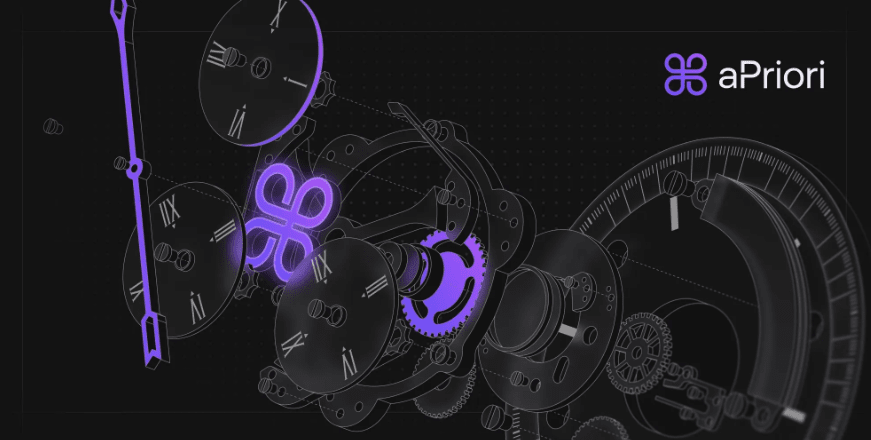Original source: aPriori

Heavily backed by top institutions like Pantera Capital, YZi Lab, OKX Ventures, aPriori is reconstructing the underlying faith of decentralized trading. Core project members come from Jump, Coinbase, Citadel Securities, and dYdX, blending on-chain native technology with Wall Street high-frequency trading experience, aPriori is building a next-generation trading execution system on high-performance public chains, injecting truly competitive trading infrastructure into DeFi.
aPriori is completely rewriting the on-chain trading process: through AI-driven DEX aggregators and MEV-supported liquidity staking modules, aPriori integrates orders from placement, matching to profit closure into a sustainable operational product system.
Following the team's launch of the AI-driven DEX aggregator Swapr last week, aPriori has shifted its focus to the 'recognition brain' of on-chain trading, which is the Order Flow Segmentation system. This system combines behavioral labeling, wallet clustering, AI analysis, and on-chain feedback mechanisms, aiming to ensure that every trade is processed more intelligently and fairly, avoiding harm from toxic flow such as arbitrage slippage while directing liquidity to where it is most needed. It not only makes trading smarter but also makes the entire on-chain market's liquidity more orderly and trustworthy.
Understanding every trade is the starting point for fair execution.
Order flow recognition is one of aPriori's core technologies. It analyzes trading behaviors, wallet history, and market reactions to judge before a trade occurs whether it belongs to normal user operations or is part of arbitrage or other 'toxic flow.' Compared to traditional methods that only consider whether a trade has been executed, this recognition method can filter potential risks earlier, providing LP with safer counterparties and enhancing path selection and execution fairness.
Technology + Ecology: The perfect moment for Monad
The data characteristics of different public chain ecosystems vary: Solana has high-speed trading and active users, but the large number of closed-source contracts limits the data available for training; Ethereum and other EVM chains have open data but are constrained by performance bottlenecks, resulting in overall conservative trading behavior and lower data density.
Monad achieves a rare balance between performance and transparency - combining Solana-like high throughput and aggressive trading style while retaining the readability and openness brought by EVM architecture. This provides aPriori with the ideal soil to build the next generation of order flow recognition models.
User data is not just participation but also helps train the next generation of trading intelligence.
Community Data Contribution Program: To train AI to intelligently identify trading behaviors, aPriori has launched a community participation data contribution program. Every user can help the model better 'understand' the on-chain world by completing the following simple actions.
· Bind wallets: Connect users' commonly used wallet addresses together to provide a more complete behavioral view;
· Supported Chains: Ethereum, BNB Chain, Monad Testnet;
· Sync social accounts: Optional association with Twitter, Discord, etc., to provide more identity clues;
· Check-in and task tracking: A dedicated panel displays user check-in records, trading behaviors, and contribution progress.
This data helps the system determine which addresses belong to the same user, whether there is coordinated operation, and enhances AI's ability to recognize trading types and risks.
How to determine if a trade contains toxic flow?
In Swapr's core engine, each trade undergoes AI model risk assessment before confirmation, primarily referencing the following points:
· The trade itself: Buy/sell direction, token path, Gas, fees, slippage, etc.;
· Address history: Trading frequency, past behaviors, asset changes;
· Market reaction: Price trends within 1 second to 24 hours after the trade;
· Profit Judgment: Is this trade profitable over different time periods, and could it potentially harm LP?
The model will identify whether each trade belongs to 'toxic flow,' such as arbitrage or squeeze based on informational advantage trading behaviors, assessing its potential threat to the fairness of the system.
Models are not better just because they are more complex; what matters is how well they understand trading.
From rule engines to AI neural networks: aPriori is not limited to a single algorithm but integrates traditional models (XGBoost, LightGBM) and time-series models (RNN, Transformer). The former efficiently handles structured data with interpretability, while the latter excels at capturing behavioral changes in time series.
Swapr ultimately adopts an ensemble architecture, where different sub-models learn in their respective data dimensions and time windows, allowing for more precise responses to complex trading behaviors after merging scores.
Who is colluding to arbitrage behind a trade?
Arbitrage actions are usually not completed by a single wallet but are the result of multiple addresses coordinating operations. By identifying these 'behavior groups,' the system can predict potential arbitrage groups and prevent 'toxic flow' from concentrating and impacting LP.
Let AI become a part of trade execution
As training data expands, Swapr's recognition system is becoming a core differentiator in DeFi routing. It not only brings better quotes but also dynamically adjusts liquidity direction to protect the interests of both users and LPs.
Founder Ray emphasizes: 'A true DeFi execution engine understands, can judge, and knows how to protect the system. We hope Swapr is the first trading entry that can 'think.'
This article is from a submission and does not represent the views of BlockBeats.

